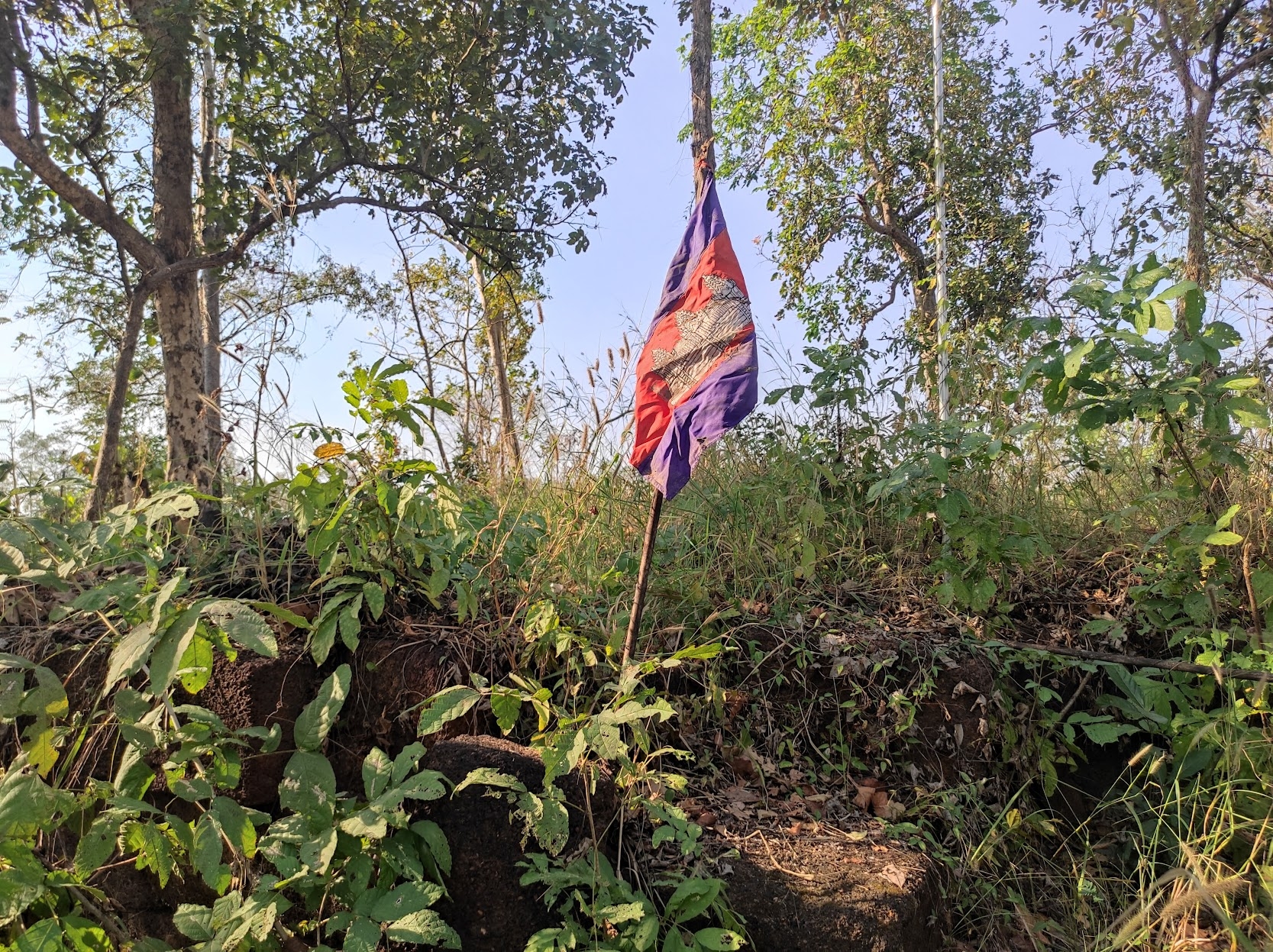- Area: Preah Vihear Province > Rovieng District > Romtum Commune > Svay Damnak Thmei
- | Type: Ancient Remains & Temples
Located just west of the village of Svay Damnak Thmei in Rovieng District of Preah Vihear, Svay Damnak is the curious remains of an ancient temple site. But what type of temple?
The site features a .5m tall laterite terrace around 25 m long on its east-west axis and around 18 m or a bit more on its north-south axis with overgrowth limiting a chance of more accurate measuring. The terrace has a cruciform shape, at least exhibited on its south side which is somewhat clear of overgrowth.
Atop the terrace, three large square and rectangular wells can be seen. These wells are irregular, not appearing to be on a common axis and looking into one it would appear as if the terrace had different stages of construction. On the inner wall of one well, a clearly defined molded wall can be seen along with precisely placed and fitted blocks, perhaps indicating a first stage of construction, whilst the other inner walls of this well are more crudely assembled and without definition. But, the site is heavily overgrown and clearance would perhaps reveal a lot more detail.

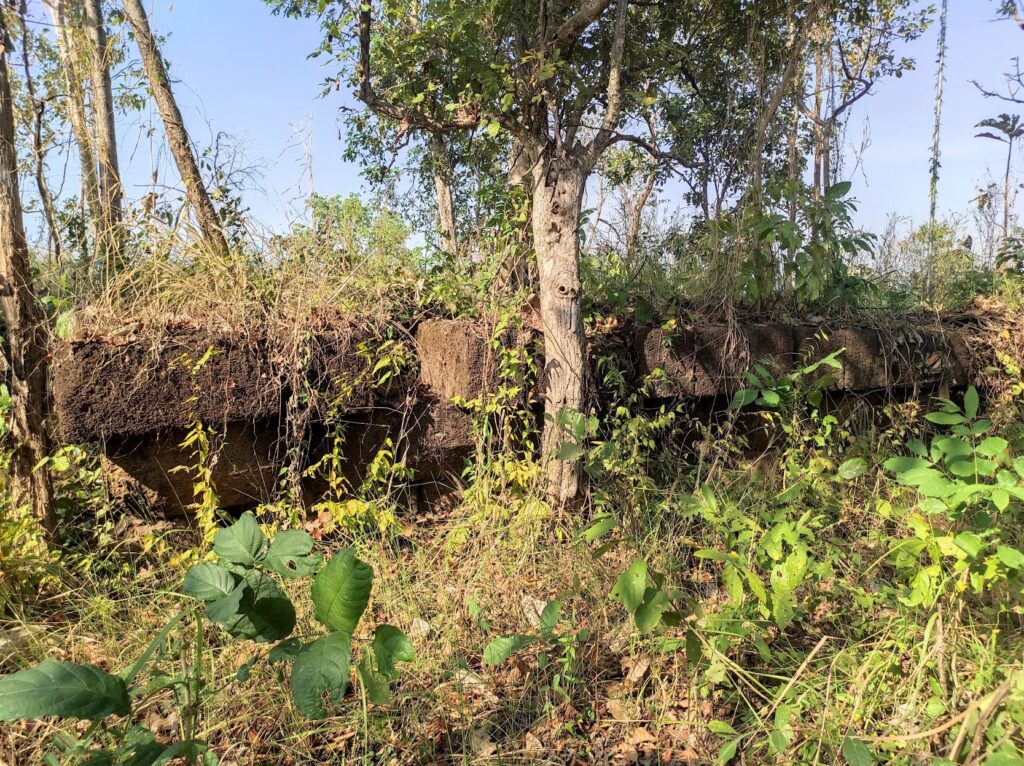
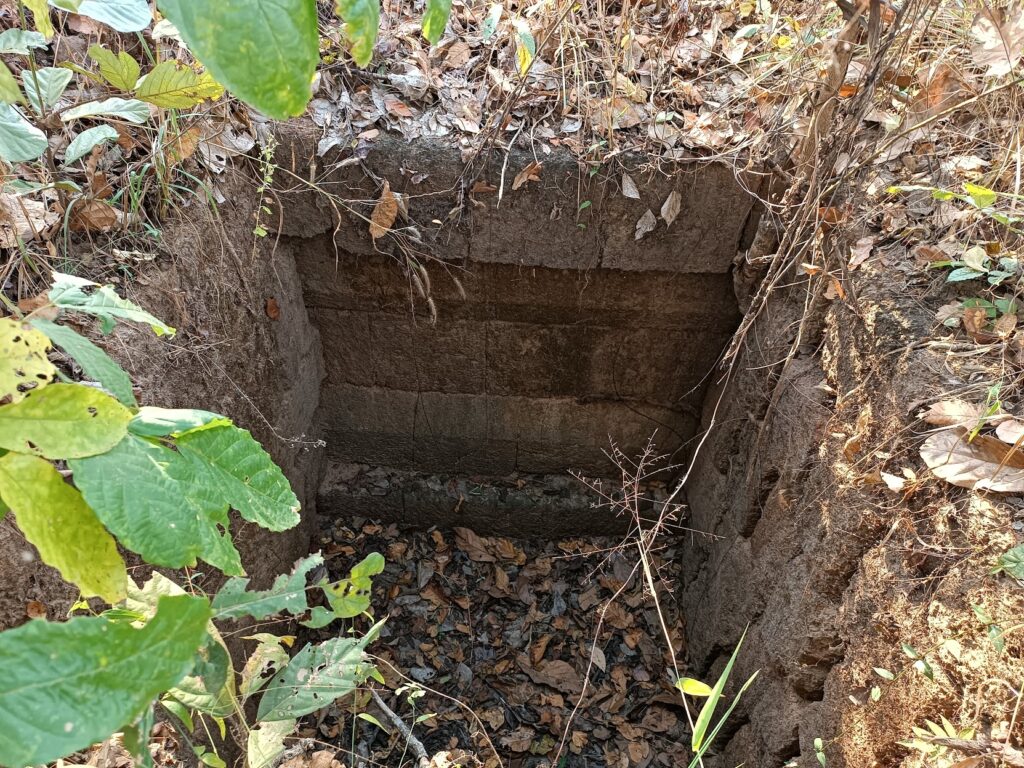
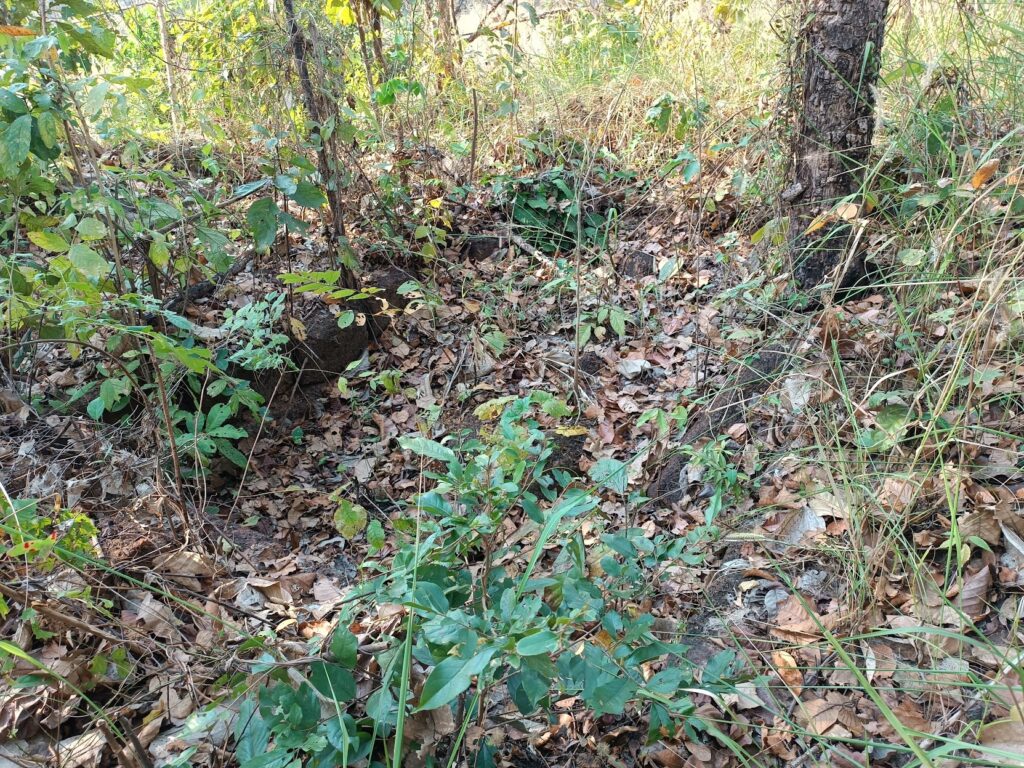
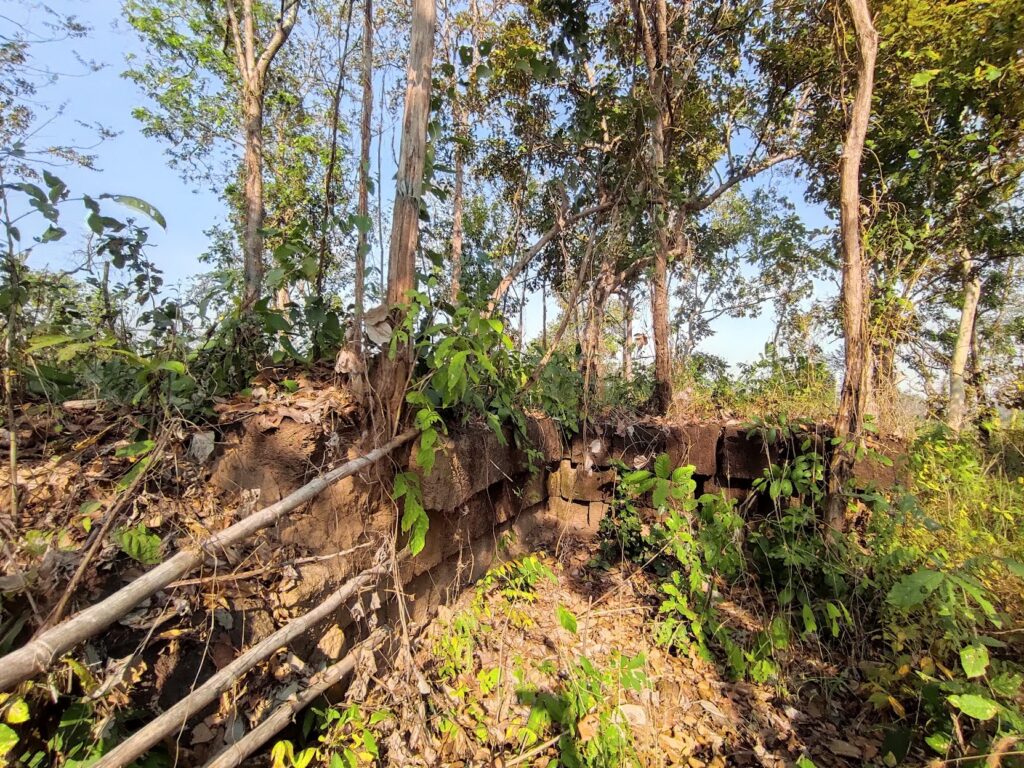
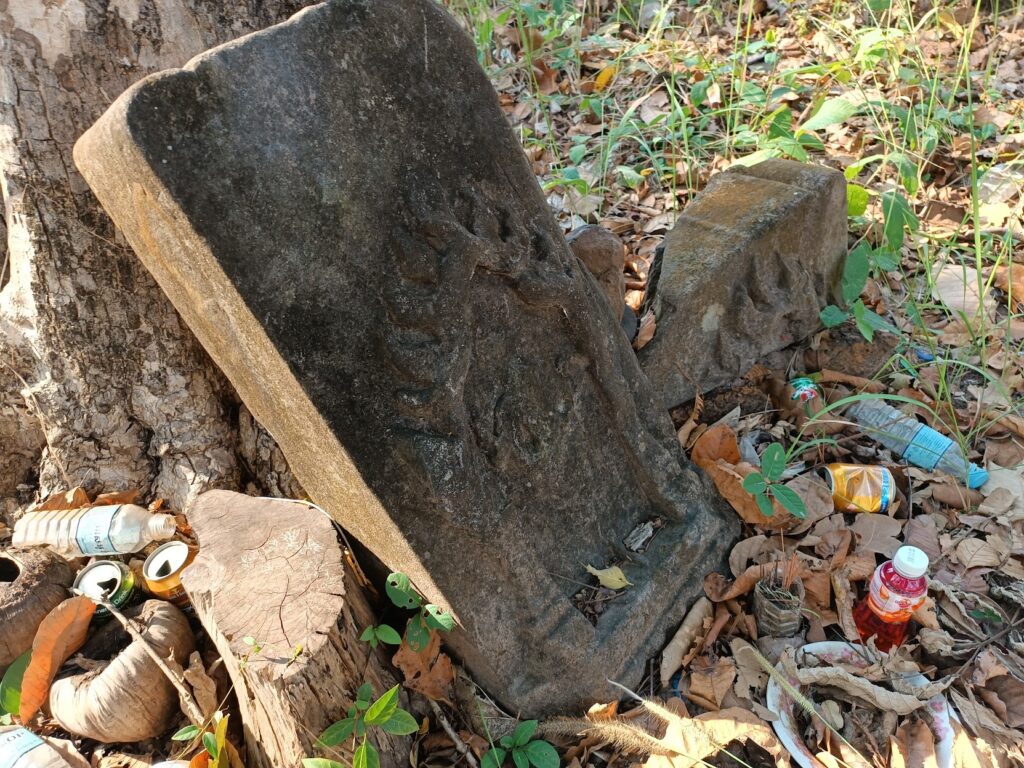
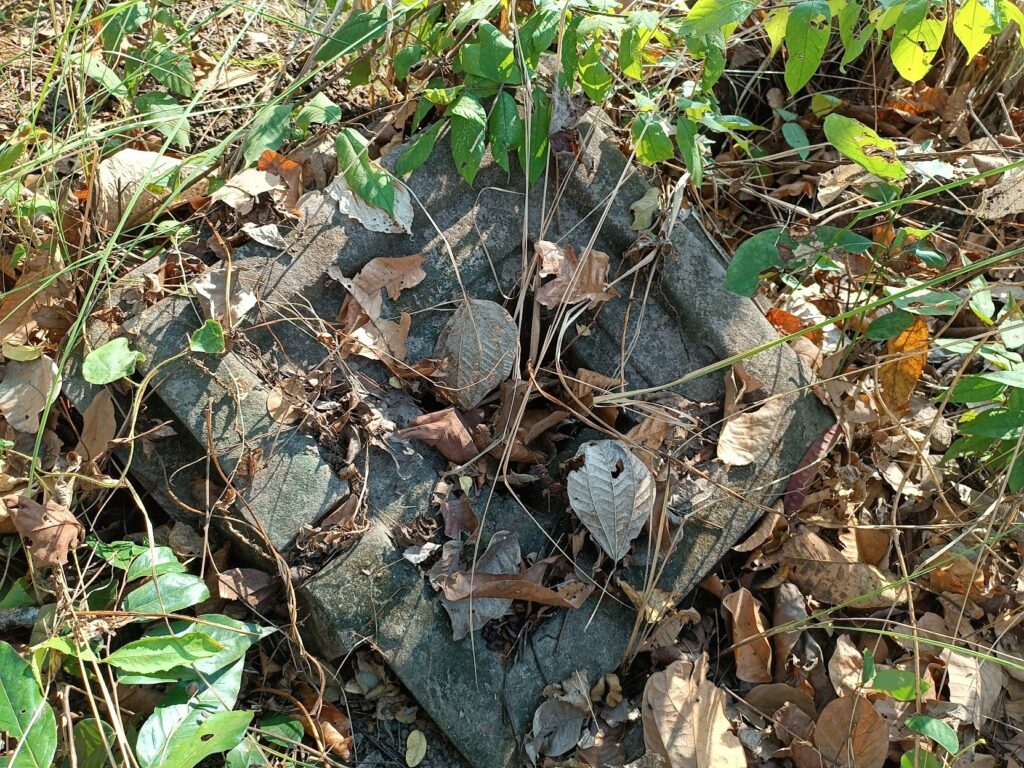
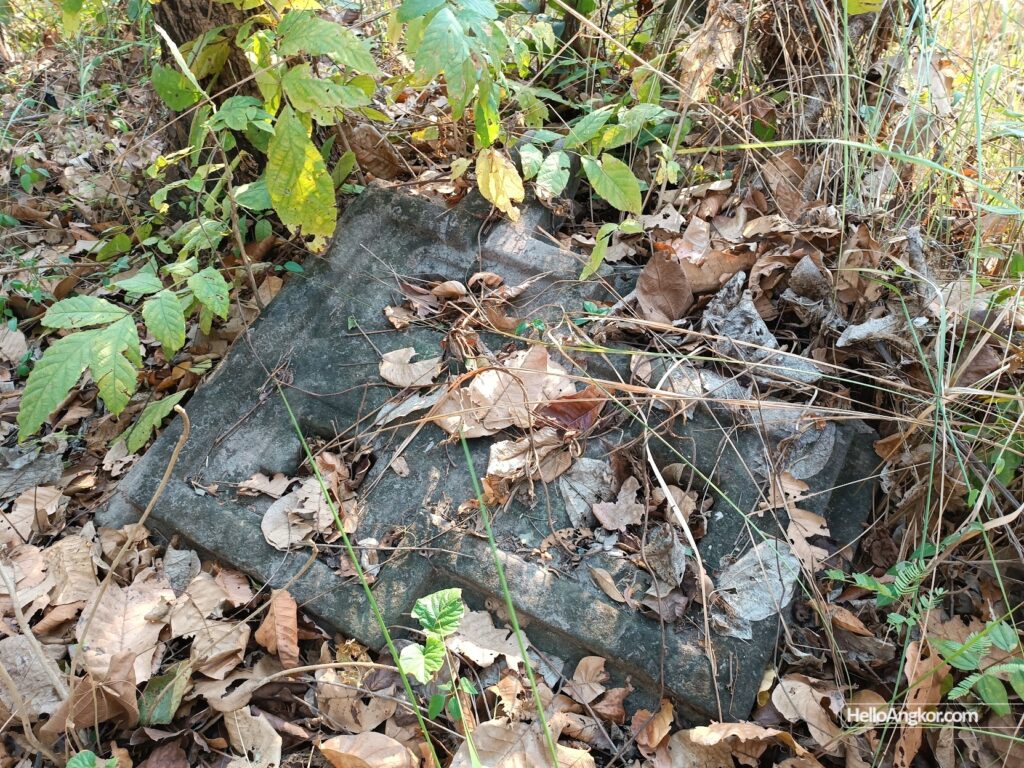
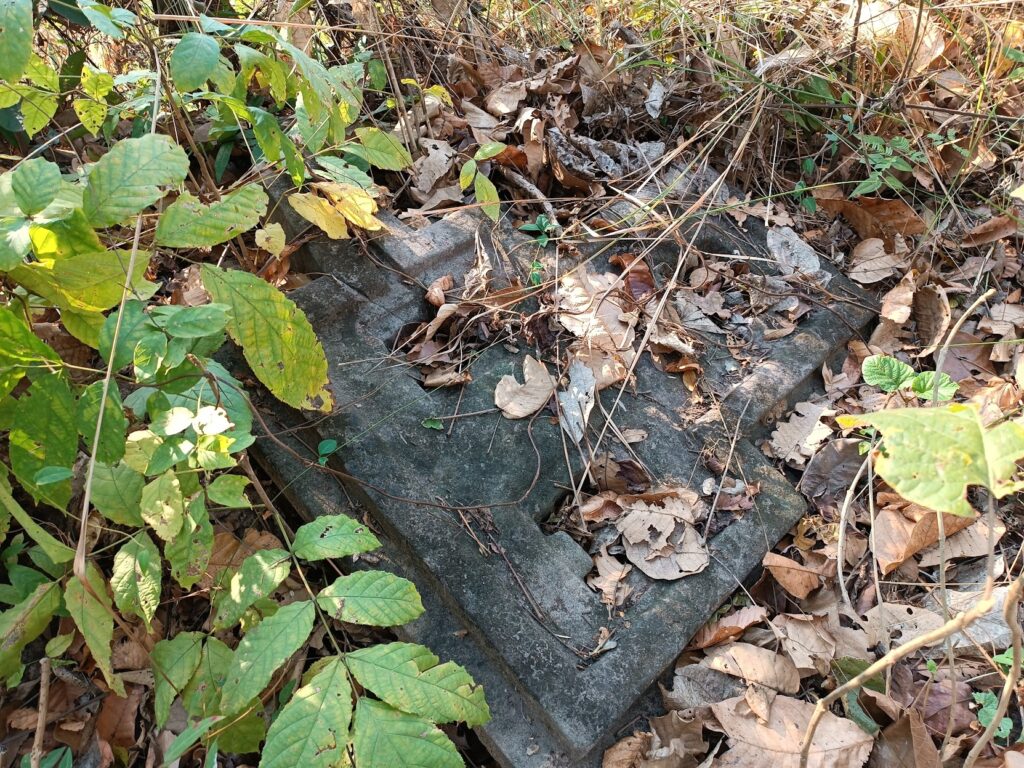


Also atop the terrace are several pedestals, one featuring slots for three objects, another similar in shape but differing in its slots, and a regular square pedestal. There are also the remnants of two interestingly shaped “boundary markers” with sema stone like shaping similar to some seen around Angkor Thom.
What type of temple was it? I do not know, it has an east-west axis akin to a Buddhist terrace, without any further evidence of being such. It has a laterite base of a size that could have supported a prasat, but, oddly placed wells seem to deny this, also the lack of any materials relating to a prasat also deny this, along with the axis. The possibility of differing construction stages adds more curiosity. Moreover, how does this site then lay claim to one of the most complete inscriptions of the early 11th century as noted below, the text of which in itself is quite fascinating.
What a wonderfully mysterious site!
Also worth noting, Wat Svay Damnak in the nearby village also holds a collection of remnants, and further to the north is another very small terrace, Preah Chhor. Also, the village here is incredibly charming, small, and characterful. Somebody once loved this site, enough to hoist a Cambodia flag upon it, we found it laying in the overgrowth, cleaned it off, and carefully propped it back up.
Inscription
- K. 158 – Stele
The sandstone stele (0.53 x 0.63 0.13) found by AYMONIER at Tuol Präsǎt, in the srok of Kompon Svày (province of Kompon Thom), and acquired by the Albert Sarraut Museum in 1923 (D 14) is, by its date, by its bilingualism and by the subject treated in the text which covers its four sides, a document very close to the inscription of Prasat Trapan Run published by L. FINOT in 1928. It’s in a good state of conservation allowing an almost complete reading.
The first side (A) begins with 5 lines 12 in Khmer relating that in 925 caka (1003 A.D.), King Jayaviravarman received from the Vap Sah (in Sanskrit Sahadeva) a Sanskrit request in which was exposed the origin ownership of Khaval Pek land and several disputed lands; the king ordered the handing over of these lands to the Väp Sah and, following custom, had the approved request engraved as a rescript.
This Sanskrit text follows, comprising 28 lines on side A and 13 lines at the beginning of side B, i.e. 41 lines representing as many stanzas which, from the metric point of view, break down as follows: 11 upajāti, 6 indravajra, 2 vasantatilaka and 22 çloka. This little poem begins with two invocations, the first of which is addressed to Shiva and the second to the Dharmakaya, in terms which leave no doubt as to the Buddhist character of this stanza: a new example of this religious syncretism which has already been pointed out, particularly with regard to the inscriptions of Tep Pranam and Práh Khan. The following six stanzas contain the eulogy of Jayaviravarman, king in 924 caka. Stanza IX introduces Sahadeva, guardian of the sealed scriptures concerning property (“guardian of the holy lists”, says the Khmer), whose genealogy is the subject of the following three stanzas: by his mother, he was general of Virendravira, general of King Harşavarman, and great-grandson of a certain Gavya to whom the origin of the disputed lands can be traced. By means of funds which he held partly from his parents Aji and consorts. Gavya acquired these lands, the text of which specifies the limits, then, according to custom, he asked for them from King Rajendravarman, who granted them to him and had the boundaries delimiting the land planted. When Gavya died, three characters Hi, På and Ke claimed that these lands belonged to them. På having, at the instigation of the named Hem, torn off the boundary stones, was prosecuted by Sahadeva before King Jayavarman V who sentenced the two culprits to mutilation of the hands and lips. As for Ke, who was an uncle of Sahadeva, he was handed over to him with his family and his lands.
These condemnations did not deter the covetousness that Sahadeva’s estates seem to have inspired. A few years later, five other malefactors who wanted to seize it, were prosecuted by the owner before King Jayaviravarman who condemned them to have their heads pressed, and confirmed Sahadeva in his property. After which, Sahadeva gave these disputed lands to Lingapureçvara, to the Buddha and to Lokeçvara, with various benefits. This Sanskrit text ends with the customary imprecations.
The Khmer text which resumes at the 14 line of side B, and which includes 31 lines on this side, 32 lines on the small side c and 35 on the small side d, has been summarized by AYMONIER in a rather imprecise manner. It contains a request from Vap Sah, which traces the history of another series of lands. belonging to him and indicates when, from whom, by whom, and at what price they were purchased. Ownership of these lands, many of which date back to the reign of Jayavarman II, and the exemptions some of which enjoyed, were confirmed by King Jayaviravarman in 925 Çaka (1003 A.D.). by a rescript reproducing the text of the request, dated the same day as the previous one, but promulgated at another time, in another part of the royal residence. The text ends with the enumeration of the dignitaries in the presence of whom the request was presented, and who guarantee in some way the authenticity of the act.
The mention three times of Devigrama, and the terms in which it is made, indicate that the location of this locality corresponds to the site of Taol Prasat where the stele comes from.
Inscriptions Cambodge II, George Coedes (translated from French, please visit the original for more detail)
Historical Notes
Svay Damnak. We were not able to visit this point located in the Stung Stung basin ourselves. The information below was given to us by our interpreter, whom we had sent in that direction.
At a point called Tuol Prasat, located 10 kilometers from the village of Svay Damnak, a limonite bedrock .50m above the ground and in the shape of a cross would be all that remains of the buildings previously erected at this point. The plot thus drawn would measure approximately 5 meters in its largest diameter. There would be two remains of Brahmanic statues, an ablution bowl and a sandstone stele still erected on its sole.
Inscription of Svay Damnak or Tuol Prasat. This stele, of a fairly coarse size, bears inscriptions on its four sides, sixty-seven lines on each of the two large ones and sixty-six on each of the two edges. The characters. small in size and pen deeply engraved, are pen distinct in stamping because of the grainy surface of the stone. However, this document is fairly well preserved. The inscription, in Sanskrit and Khmer, recounts a sentence of King Suryavarman I in a matter claiming land (1003 AD.), AYMONIER. Cambodia, 1, 378-382 (as Tuol Prasat)
Inventaire descriptif des monuments du Cambodge, E. Lunet de Lajonquière, 1902
Map
Site Info
- Site Name: Svay Damnak Khmer Name: ស្វាយដំណាក់
- Reference ID: HA12124 | Posted: January 16, 2021 | Last Update: March 2nd, 2023
- Other Names: Tuol Prasat, Prasat Tuol
- Tags/Group: re, T16, Temples
- Location: Preah Vihear Province > Rovieng District > Romtum Commune > Svay Damnak Thmei
- MoCFA ID: 843
- IK Number: 170
- Inscription Number/s: K. 158

